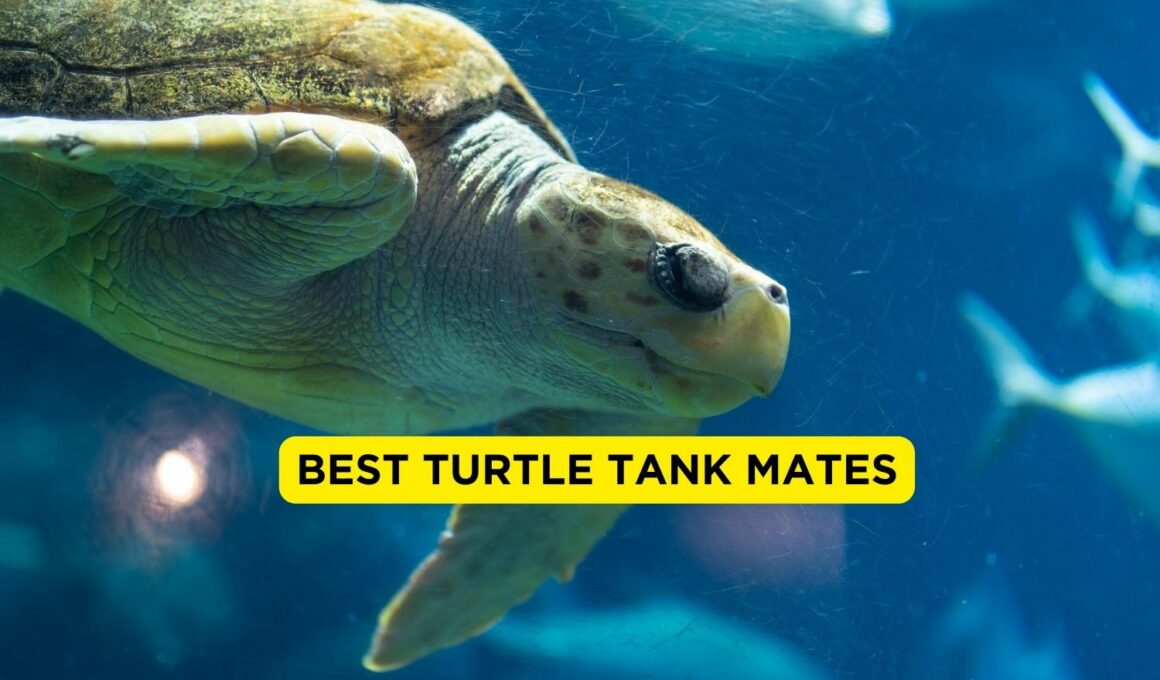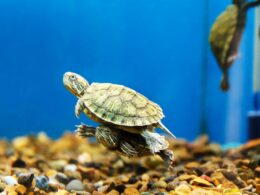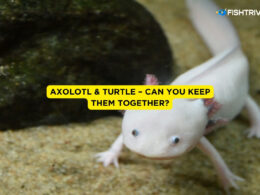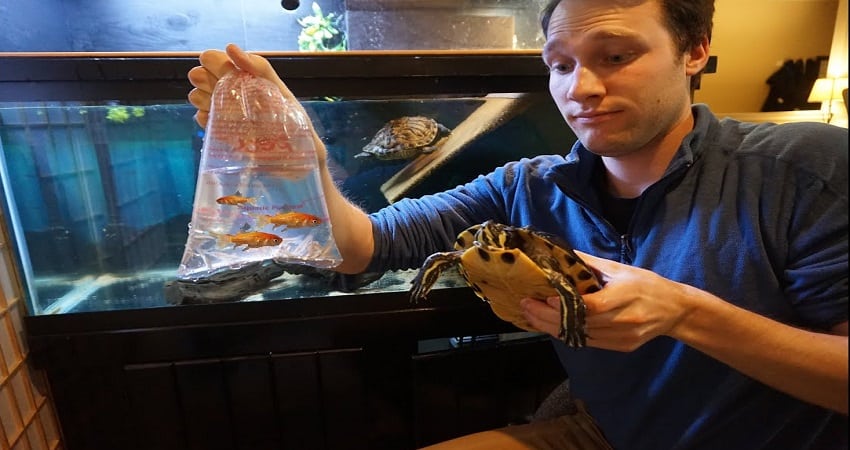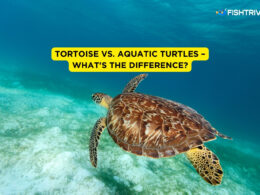In this article Show
As an avid fish keeper passionate about home aquariums, I understand the importance of creating a harmonious environment for your aquatic pets. Choosing the right companions for your turtle is not just about adding variety to your tank; it’s about ensuring a balanced and healthy ecosystem for all inhabitants.
Turtles, as fascinating and resilient pets, thrive in environments that mirror their natural habitat. This includes not only the physical setup of their tanks but also the company they keep. Selecting the right tank mates for your turtle goes beyond aesthetics; it’s about compatibility, safety, and the overall well-being of your aquatic community.
In this article, we will explore the top choices for turtle tank mates. Each recommendation is chosen for its compatibility with typical turtle behaviors and environments. We’ll cover a range of species, from the playful Zebra Danio to the industrious Ghost Shrimp, each bringing its unique benefits to your turtle’s underwater world.
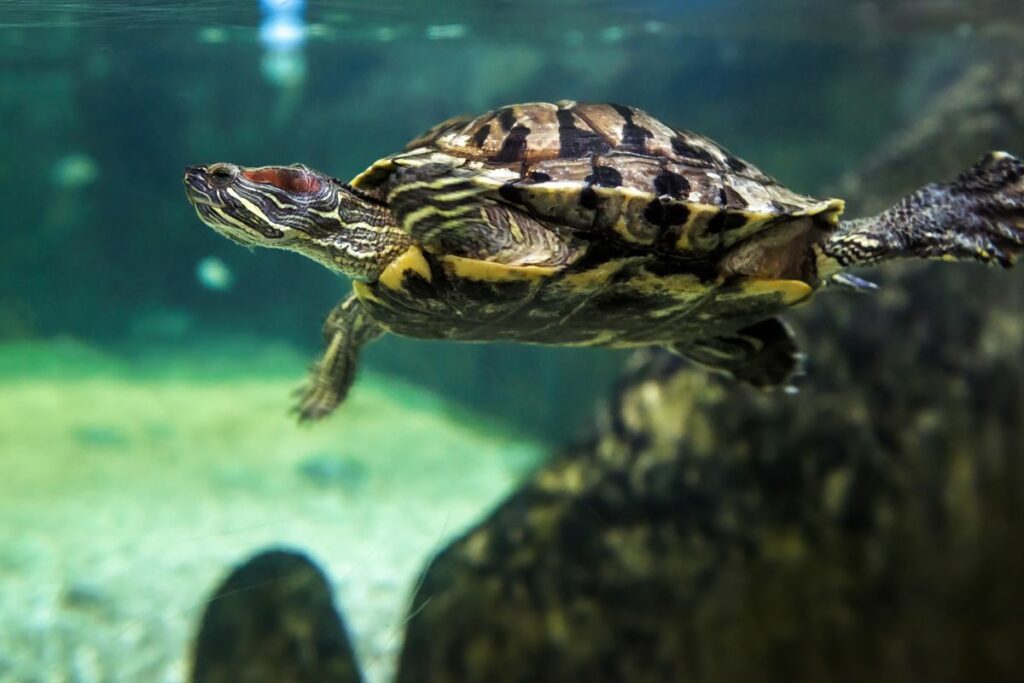
Why Tank Mates Matter for Turtles
The decision to introduce tank mates to your turtle’s environment is not just a matter of preference but a significant step towards promoting turtle health and a balanced aquarium ecosystem.
While turtles can live alone, the addition of suitable tank mates offers a range of benefits that contribute to the overall well-being of your aquatic pets.
1. Enhanced Turtle Health
Just like any other pet, turtles can benefit from the dynamic environment created by the presence of tank mates. These interactions can encourage more natural behaviors, which are crucial for the mental and physical health of your turtle.
Engaging with tank mates, whether through playful chases or peaceful cohabitation, adds a level of stimulation that solitary tanks often lack.
2. Balanced Aquarium Ecosystem
Introducing the right tank mates can lead to a more balanced and self-sustaining ecosystem within your aquarium.
Certain fish and invertebrates play vital roles in maintaining water quality by consuming algae, debris, and leftover food. This natural cleaning process helps in maintaining a cleaner and healthier environment, which is essential for the well-being of your turtle.
3. Pet Companionship
While turtles are not social in the same way as some pets, they do interact with other creatures in their environment. The presence of tank mates can provide a form of companionship that enriches the turtle’s life. Observing and interacting with other aquatic life adds diversity to their daily experience, reducing stress and promoting a more active lifestyle.
4. Educational Value
For turtle owners, the addition of tank mates offers an opportunity to learn about different species and their interactions within the aquarium ecosystem. This educational aspect enhances the experience of keeping turtles, making it more rewarding and engaging.
5. Aesthetic Appeal
Beyond the health and behavioral benefits, having a variety of species in your tank adds to its aesthetic appeal. The movement, colors, and diversity brought by different tank mates create a visually stimulating environment, not just for the turtle but also for the observers.
Best Turtle Tank Mates
Selecting the right tank mates for your turtle is crucial for a harmonious and healthy aquarium. Here are 13 excellent choices, each with its unique characteristics and care requirements:
1. Zebra Danio (Danio Rerio)
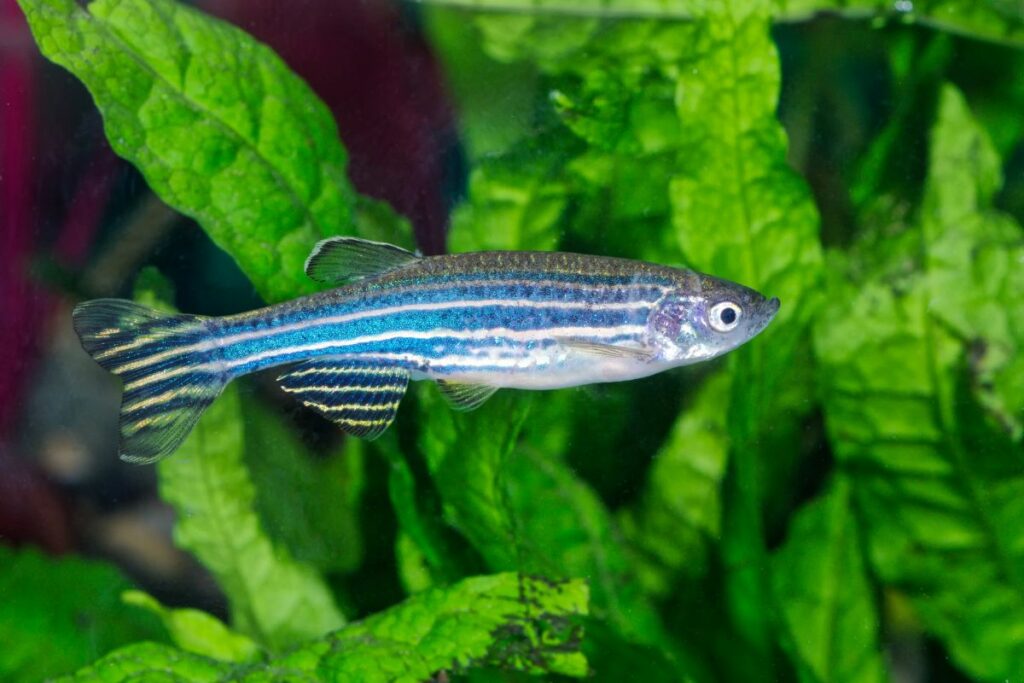
| Characteristics | Features |
| Size | Up to 2 inches |
| Diet | Omnivorous (flake, frozen, or live food) |
| Temperament | Peaceful and active |
| Care Level | Easy |
| Minimum Tank Size | 10 gallons |
Zebra Danios are a popular choice as turtle tank mates due to their small size, striking zebra-like patterns, and energetic swimming behavior. They are known for their hardy nature, making them suitable for beginners.
These fish are peaceful, which helps in maintaining a stress-free environment in the tank. Due to their speed and agility, they can easily coexist with turtles, adeptly navigating the waters to keep out of harm’s way.
2. Ghost Shrimp (Palaemonetes paludosus)
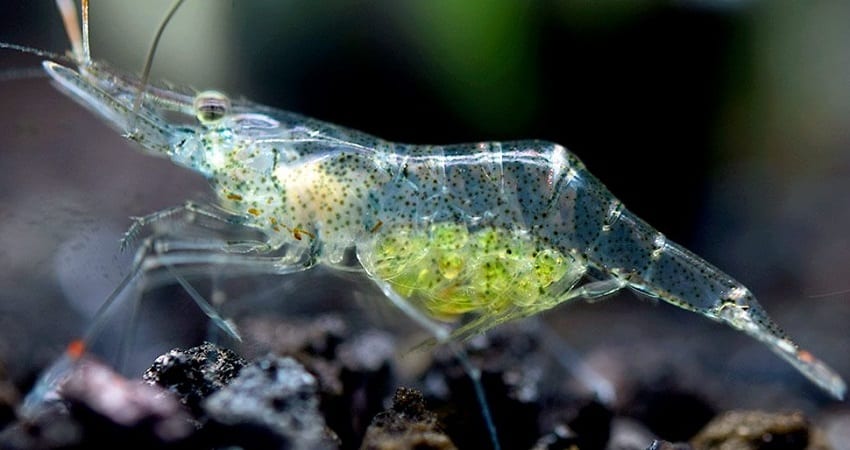
| Characteristics | Features |
| Size | Up to 1.5 inches |
| Diet | Omnivorous (algae, detritus, leftover food) |
| Temperament | Peaceful and shy |
| Care Level | Easy |
| Minimum Tank Size | 10 gallons |
Ghost Shrimp are excellent tank mates for turtles, primarily due to their beneficial role in the ecosystem of the aquarium. These transparent shrimps are efficient cleaners, feeding on algae, detritus, and leftover food, thus helping to maintain a clean and healthy environment.
Their small size and peaceful nature make them unobtrusive companions. While they are adept at hiding and can coexist with turtles, their size may make them vulnerable, so it’s essential to provide plenty of hiding spaces.
3. Platy Fish (Xiphophorus Maculatus)
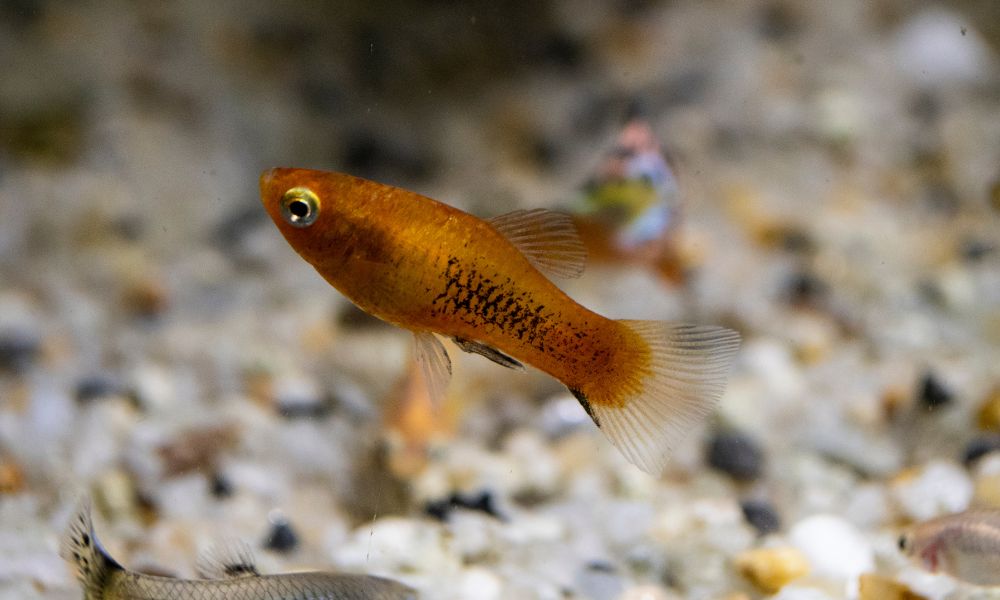
| Characteristics | Features |
| Size | Up to 2.5 inches |
| Diet | Omnivorous (flake food, vegetables, and occasional live food) |
| Temperament | Peaceful and social |
| Care Level | Easy |
| Minimum Tank Size | 10 gallons |
Platy fish is a vibrant and lively addition to a turtle tank. Known for their beautiful array of colors and patterns, they add visual interest to the aquarium. These fish are peaceful and social, making them excellent community members in a mixed-species tank.
Platies are not only easy to care for but also adaptable to various water conditions, aligning well with the needs of many turtle species. Their omnivorous diet, consisting of flake food, vegetables, and occasional live food, is easy to manage.
4. Neon Tetra (Paracheirodon innesi)

| Characteristics | Features |
| Size | Up to 2.5 inches |
| Diet | Omnivorous (flake, pellets, frozen, or live food) |
| Temperament | Peaceful and schooling |
| Care Level | Moderate |
| Minimum Tank Size | 20 gallons |
Neon Tetras are a dazzling choice for turtle tanks, famous for their vibrant blue and red stripes that add a splash of color to any aquarium. These small, peaceful fish thrive in schools, creating a mesmerizing display of synchronized swimming. Due to their size, Neon Tetras are best suited for larger turtle tanks where they have ample space to avoid turtles.
5. Guppies (Poecilia Reticulata)
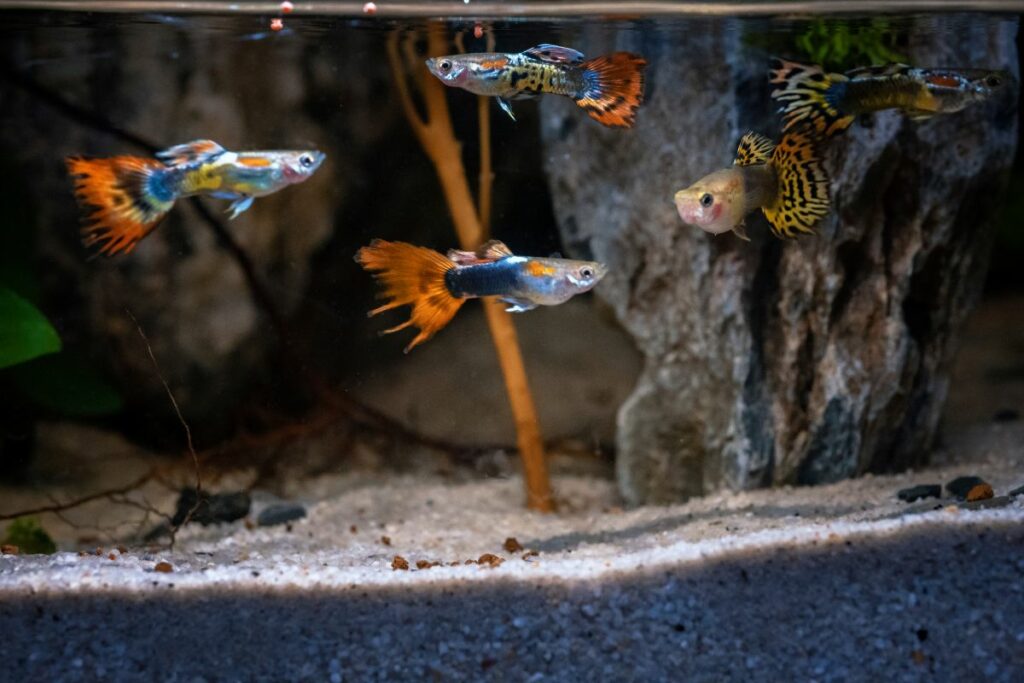
| Characteristics | Features |
| Size | Up to 2.4 inches |
| Diet | Omnivorous (flake food, brine shrimp, bloodworms) |
| Temperament | Peaceful and active |
| Care Level | Easy |
| Minimum Tank Size | 10 gallons |
Guppies are a popular choice for turtle tanks, known for their bright colors and lively behavior. These small, peaceful fish add dynamic movement and visual appeal to the aquarium. Guppies are hardy and adaptable, making them suitable for a variety of water conditions, aligning well with the needs of turtles. They are omnivorous, with a diet that’s easy to fulfill, consisting of flake food and occasional live or frozen treats like brine shrimp or bloodworms.
6. Corydoras Catfish (Corydoras spp.)
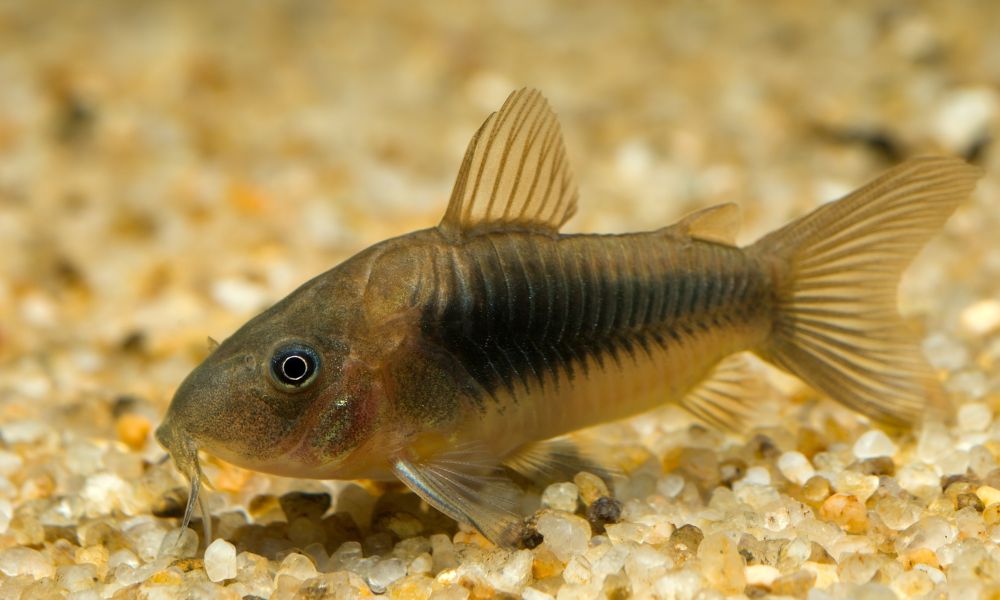
| Characteristics | Features |
| Size | Up to 4 inches |
| Diet | Omnivorous (sinking pellets, vegetables, occasional live food) |
| Temperament | Peaceful and active |
| Care Level | Easy |
| Minimum Tank Size | 20 gallons |
Corydoras catfish are an excellent choice as turtle tank mates, renowned for their peaceful nature and unique armored appearance. These bottom-dwellers play an essential role in keeping the tank clean by scavenging for food along the substrate. They are hardy and adaptable, thriving in a variety of water conditions. Their diet is straightforward, consisting of sinking pellets, vegetables, and occasional live food.
7. Cherry Barb (Puntius titteya)
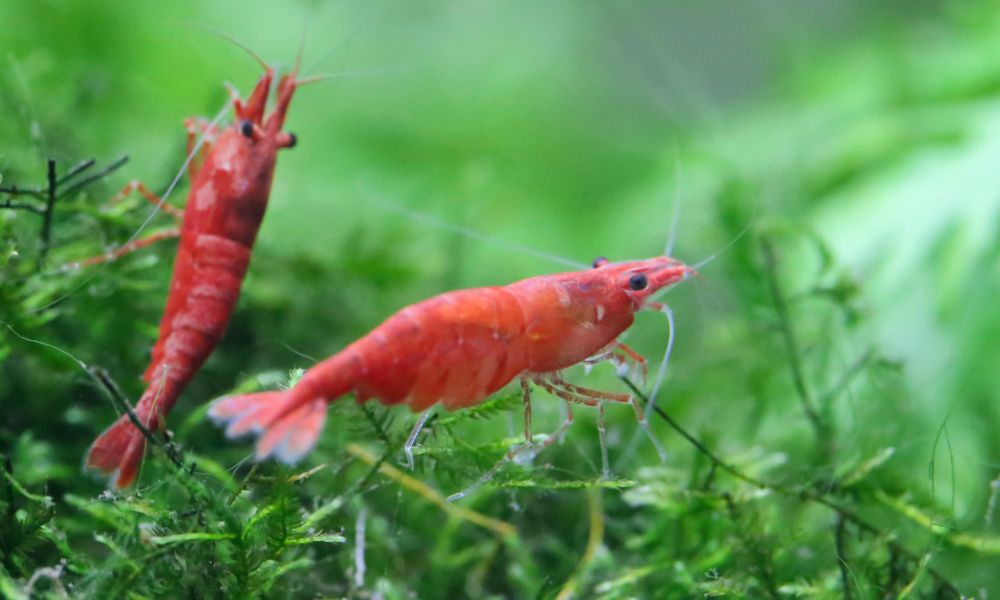
| Characteristics | Features |
| Size | Up to 2 inches |
| Diet | Omnivorous (flake food, live food, vegetables) |
| Temperament | Peaceful and slightly shy |
| Care Level | Easy |
| Minimum Tank Size | 20 gallons |
Cherry Barbs are a charming addition to a turtle tank, admired for their vibrant red color and peaceful nature. These small fish are known for their non-aggressive behavior, making them excellent companions in a community aquarium.
They thrive on a simple omnivorous diet, including flake food, and live food like brine shrimp, and vegetables. Cherry Barbs do well in groups and prefer having hiding places, which is important for their safety in a turtle tank.
8. Bristlenose Pleco (Ancistrus spp.)
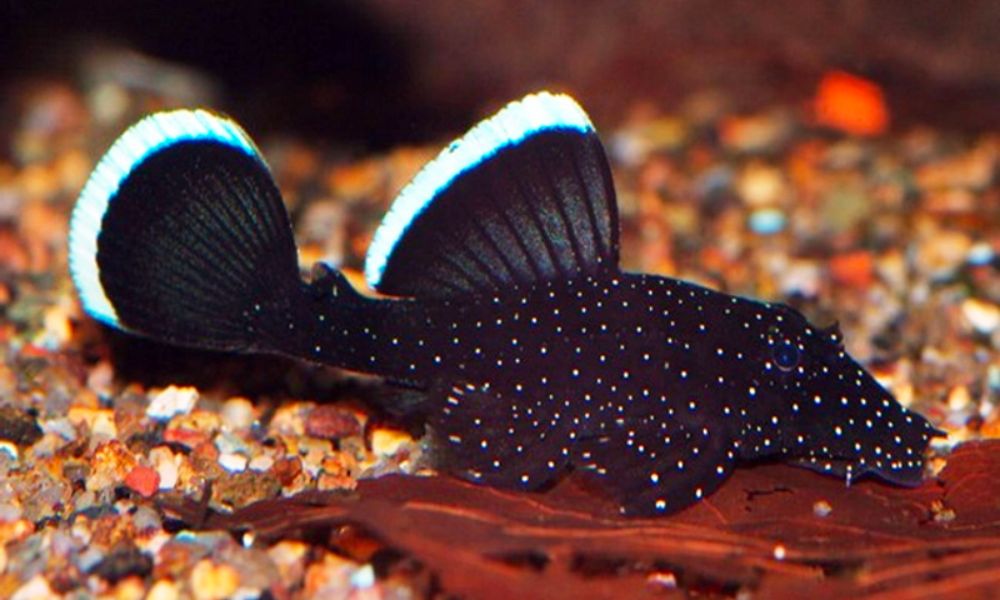
| Characteristics | Features |
| Size | Up to 6 inches |
| Diet | Herbivorous (algae, vegetables, wafers) |
| Temperament | Peaceful, solitary |
| Care Level | Easy |
| Minimum Tank Size | 30 gallons |
Bristlenose Plecos are ideal for turtle tanks due to their peaceful nature and algae-eating habits. Their unique appearance, with bristle-like appendages, adds intrigue. They require minimal care, feeding mainly on algae and supplemented with vegetables and wafers. Suited for larger tanks, they coexist well with turtles, focusing on cleaning without disturbance.
9. Swordtail Fish (Xiphophorus helleri)
| Characteristics | Features |
| Size | Up to 5 inches |
| Diet | Omnivorous (flake, live, and vegetable foods) |
| Temperament | Peaceful, active |
| Care Level | Easy |
| Minimum Tank Size | 20 gallons |
Swordtail fish are a lively and colorful choice for turtle tanks. Their peaceful yet active nature makes them compatible with turtles in larger aquariums. They adapt easily to various environments and have a straightforward omnivorous diet. Their distinctive sword-like tail adds a unique visual element to the tank.
10. African Dwarf Frog (Hymenochirus boettgeri)
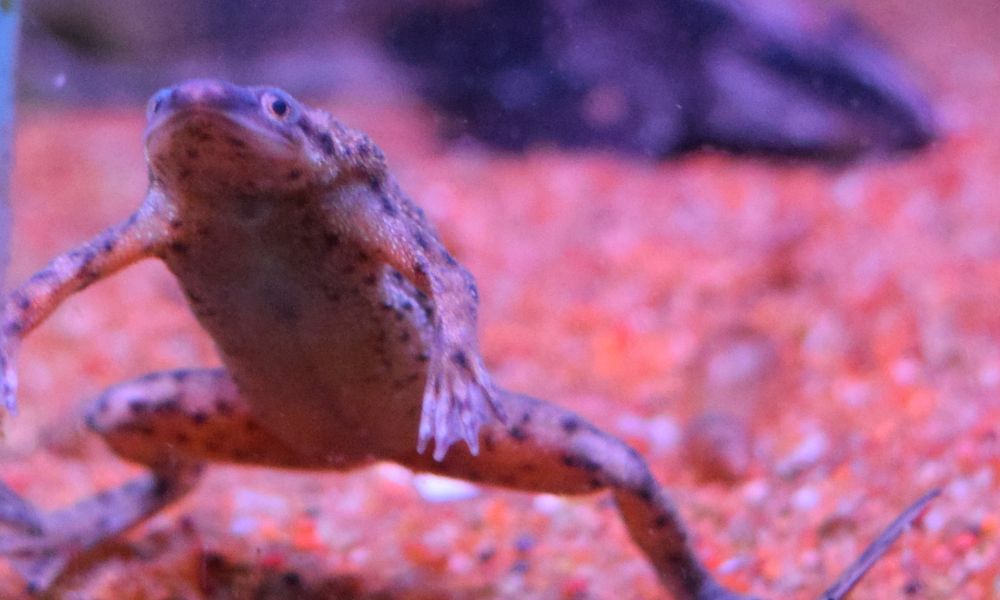
| Characteristics | Features |
| Size | Up to 2.5 inches |
| Diet | Carnivorous (frozen or live brine shrimp, bloodworms) |
| Temperament | Peaceful, social |
| Care Level | Moderate |
| Minimum Tank Size | 10 gallons |
African Dwarf Frogs are a unique and peaceful addition to turtle tanks. They are small, fully aquatic frogs that enjoy a carnivorous diet of brine shrimp and bloodworms. Social in nature, they add an interesting dynamic to the tank. Careful introduction and monitoring are advised to ensure harmonious coexistence with turtles.
11. Molly Fish (Poecilia Sphenops)
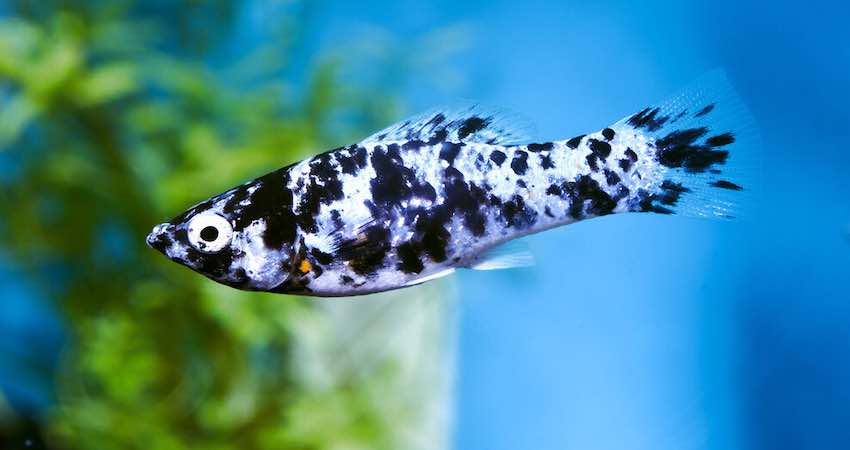
| Characteristics | Features |
| Size | Up to 4.5 inches |
| Diet | Omnivorous (flake, vegetable, and occasional live food) |
| Temperament | Peaceful, social |
| Care Level | Easy |
| Minimum Tank Size | 20 gallons |
Mollyfish are a great choice for turtle tanks, known for their adaptability and peaceful nature. They come in various colors and sizes, adding visual appeal. Their omnivorous diet is easy to manage, and their social behavior makes them a lively addition to the aquarium. Suitable for larger tanks, they can coexist well with turtles.
12. Rasbora (Rasbora spp.)

| Characteristics | Features |
| Size | Up to 4 inches |
| Diet | Omnivorous (flake, small pellets, frozen food) |
| Temperament | Peaceful, schooling |
| Care Level | Easy |
| Minimum Tank Size | 20 gallons |
Rasboras are peaceful, schooling fish, ideal as turtle tank mates. They are known for their small size and striking colors. These fish thrive in groups, adding a dynamic and cohesive movement to the tank. Their omnivorous diet is simple to cater to, and their tranquil nature makes them suitable companions in a turtle-inhabited aquarium, especially in larger setups with ample space for coexistence.
13. Apple Snail (Pomacea Bridgesii)
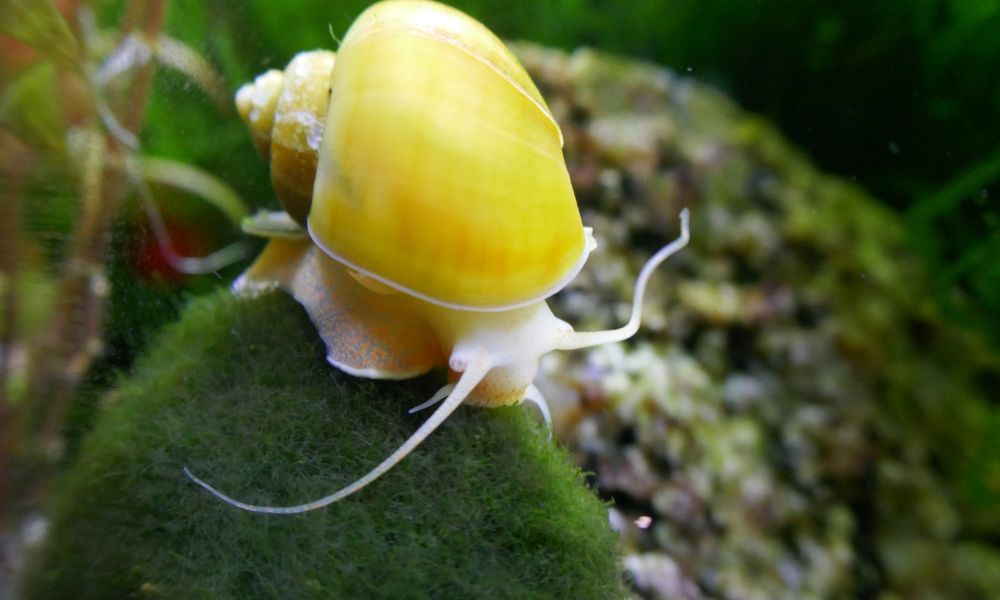
| Characteristics | Features |
| Size | Up to3 inches |
| Diet | Herbivorous (algae, vegetable matter) |
| Temperament | Peaceful, solitary |
| Care Level | Easy |
| Minimum Tank Size | 20 gallons |
Apple Snails are a popular choice for turtle tanks due to their large size and striking appearance. These snails are peaceful and mostly keep to themselves, feeding on algae and vegetable matter.
They contribute to tank cleanliness and add a unique visual aspect. Due to their size, they are less likely to be harmed by turtles but should still be monitored. Their easy care makes them a hassle-free addition to a turtle’s habitat.
Tips for Introducing New Tank Mates to Your Turtle
Introducing new tank mates to your turtle can be a delicate process that requires careful planning and observation. Here are some practical tips to ensure a smooth introduction and harmonious cohabitation:
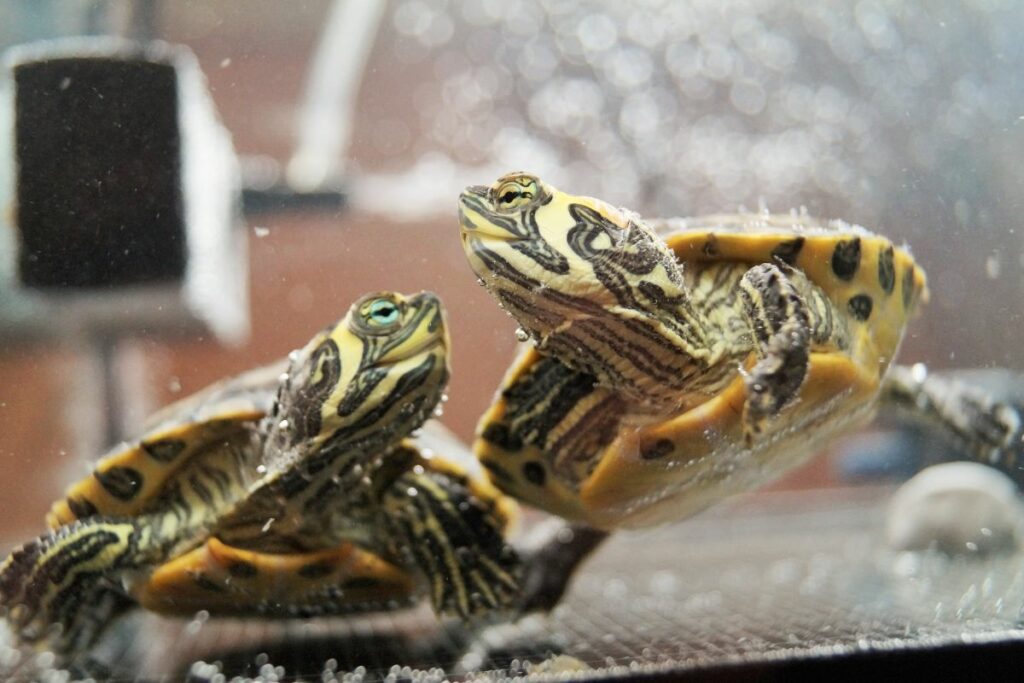
1. Research Compatibility
Before adding any new tank mates, thoroughly research their compatibility with your turtle. Consider factors like size, temperament, and environmental needs. Some species may be more prone to stress or aggression, affecting both the new arrival and your turtle.
2. Quarantine New Arrivals
To prevent the spread of diseases, quarantine new tank mates in a separate tank for at least two weeks. This period allows you to observe the health of the new arrivals and ensure they are disease-free.
3. Gradual Introduction
When introducing aquarium pets to a turtle, do it gradually. Start by placing the new tank mates in a separate but visible container inside the turtle tank. This allows both parties to get accustomed to each other’s presence without direct contact.
4. Monitor Turtle Behavior
Observe your turtle’s behavior closely during and after the introduction. Signs of stress or aggression, such as excessive chasing or biting, may indicate that the pairing is not suitable.
5. Create Adequate Space
Ensure that your tank is spacious enough to accommodate all inhabitants comfortably. Overcrowding can lead to stress and aggression. Provide plenty of hiding places and visual barriers to allow shy species to retreat if needed.
6. Maintain Water Quality
The introduction of new species can alter the dynamics of your tank’s ecosystem. Regularly test and maintain water quality to ensure it meets the needs of both your turtle and its tank mates.
7. Feed Separately If Needed
To avoid competition and ensure all pets are adequately fed, you may need to feed your turtle and its tank mates separately. This can be done by targeting feeding areas or temporarily separating them during feeding times.
By following these guidelines, you can foster a peaceful and enriching environment for your turtle and its new companions. Remember, each turtle is unique, and what works for one may not work for another, so always be prepared to adapt your approach based on your observations and experiences.






